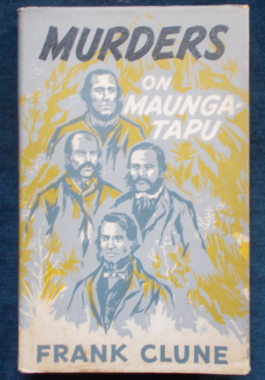-
 On Christmas Eve 2002, Laci Peterson, a young wife and mother-to-be, disappeared from her home in Modesto, California...Praying for a happy ending, friends and family stood by Laci's grieving husband Scott. Four months later, Laci's decomposed body was found in the murky waters of San Francisco Bay. The body of her child had washed ashore about a mile away, after a possible "coffin birth". It was a sad closure to an exhaustive search, and a grim end to a marriage that by all account had appeared to be perfect. But the authorities already had a prime suspect...Scott Peterson's behavior had cast a mysterious shadow over the death of his pregnant wife - his alibi on the day of the disappearance was questionable; he admitted to an affair with another woman; and when he was finally charged with capital murder, he had altered his appearance. But it was only after a stunning criminal trial - packed with even more shocking revelations - that a jury convicted Scott Peterson of murder and sentenced him to death. With black and white photographs.
On Christmas Eve 2002, Laci Peterson, a young wife and mother-to-be, disappeared from her home in Modesto, California...Praying for a happy ending, friends and family stood by Laci's grieving husband Scott. Four months later, Laci's decomposed body was found in the murky waters of San Francisco Bay. The body of her child had washed ashore about a mile away, after a possible "coffin birth". It was a sad closure to an exhaustive search, and a grim end to a marriage that by all account had appeared to be perfect. But the authorities already had a prime suspect...Scott Peterson's behavior had cast a mysterious shadow over the death of his pregnant wife - his alibi on the day of the disappearance was questionable; he admitted to an affair with another woman; and when he was finally charged with capital murder, he had altered his appearance. But it was only after a stunning criminal trial - packed with even more shocking revelations - that a jury convicted Scott Peterson of murder and sentenced him to death. With black and white photographs. -
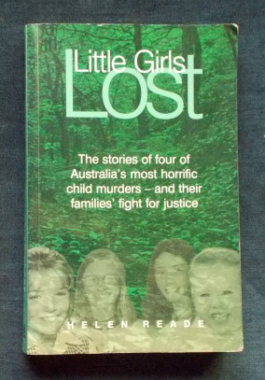 The heartbreaking stories of the murders of four girls - and a groundbreaking account of how the girls' grieving parents brought about changes in the law to ease the unbearable burden for themselves - and for the families of other homicide victims. Author Helen Reade gives the reader an intimate insight into the thoughts and actions of the victims' families as they recall the events leading up to - including - and after the appalling events. These include: the stabbing murder of 5-year-old Nicole Hanns in 1974; the sexual assault and murder of 9-year-old Ebony Simpson in 1992; and the rape and murders of Bega schoolgirls, 14-year-old Lauren Barry and her friend 16-year-old Nichole Collins in 1997. Illustrated with black and white photographs.
The heartbreaking stories of the murders of four girls - and a groundbreaking account of how the girls' grieving parents brought about changes in the law to ease the unbearable burden for themselves - and for the families of other homicide victims. Author Helen Reade gives the reader an intimate insight into the thoughts and actions of the victims' families as they recall the events leading up to - including - and after the appalling events. These include: the stabbing murder of 5-year-old Nicole Hanns in 1974; the sexual assault and murder of 9-year-old Ebony Simpson in 1992; and the rape and murders of Bega schoolgirls, 14-year-old Lauren Barry and her friend 16-year-old Nichole Collins in 1997. Illustrated with black and white photographs. -
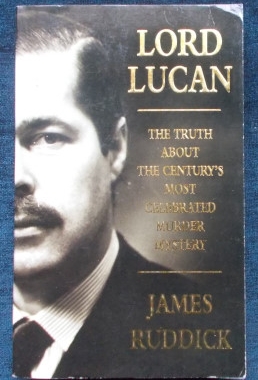
Lord Lucan: James Ruddick
$12.00This book promises the truth behind the century's most celebrated murder mystery. On a wintry night in November 1974, Sandra Rivett, nanny to the children of Lord and Lady Lucan, was brutally bludgeoned to death in the basement of their Belgravia home. Lady Lucan was also attacked and identified the attacker as her estranged husband, the 7th Earl of Lucan. That night, Lord Lucan vanished and has never been found, despite numerous sightings all over the world. The author has interviewed many of those involved, including, for the first time, Lord Lucan's wife Veronica. He gained access to the missing Earl's private papers, which yield remarkable new information. He also re-examines the forensic evidence and questions the key witnesses to produce the most likely explanation to date of what really happened on November 7, 1974. Illustrated with black and white photographs.
-
 October, 2011: At first it looked like a swag, said the grader driver who found the body just off the road outside the outback town of Katherine. Police identify the dead man as Ray Nicefero, who'd recently appeared in court for aggravated assault and breaching a domestic violence order. Three days later, three young local suspects were arrested: Christopher Malyschko; Darren 'Spider' Halfpenny; and 19-year-old indigenous Zak Grieve. A month later, Bronwyn Buttery, Ray's former partner and Christopher's mother, is arrested. But when the accused face court in the rough justice system of the Northern Territory, it soon becomes apparent there are few certain, provable facts to be had. Depending on who was talking, a loving friend could be an abusive monster; a battered wife a conniving temptress. And a joke between mates about the best way to dispose of a body becomes a conspiracy to murder. The outcome of the case is no less murky, thanks to the NT's mandatory sentencing laws, which, the judge said, 'brings about injustice'. This is the story of murder in an outback town and the extraordinary aftermath; and it raises important questions such as how an indigenous man who was not present at a murder can be sentenced to jail for twenty years.
October, 2011: At first it looked like a swag, said the grader driver who found the body just off the road outside the outback town of Katherine. Police identify the dead man as Ray Nicefero, who'd recently appeared in court for aggravated assault and breaching a domestic violence order. Three days later, three young local suspects were arrested: Christopher Malyschko; Darren 'Spider' Halfpenny; and 19-year-old indigenous Zak Grieve. A month later, Bronwyn Buttery, Ray's former partner and Christopher's mother, is arrested. But when the accused face court in the rough justice system of the Northern Territory, it soon becomes apparent there are few certain, provable facts to be had. Depending on who was talking, a loving friend could be an abusive monster; a battered wife a conniving temptress. And a joke between mates about the best way to dispose of a body becomes a conspiracy to murder. The outcome of the case is no less murky, thanks to the NT's mandatory sentencing laws, which, the judge said, 'brings about injustice'. This is the story of murder in an outback town and the extraordinary aftermath; and it raises important questions such as how an indigenous man who was not present at a murder can be sentenced to jail for twenty years. -
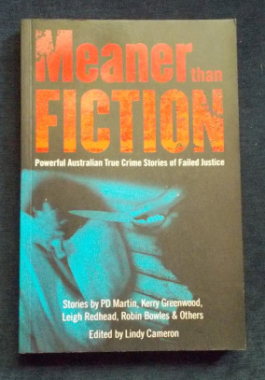 Just where is justice in Australia hiding? This brilliant new collection of true crime stories takes us into the Australian courts of the 1980s and '90s, back in time to the goldfields of the 1860s, and out to the island nation of Nauru in 2006 to explore how the scales of justice are unbalanced. This is a world in which the innocent still get locked up and the guilty too often go free. This collection is a must for all lovers of true crime. It will shock, outrage and intrigue. Features: Robin Bowles charts a mysterious case of sudden death; Lindy Cameron on the random shooting of Dr Andrew Taylor; Kathryn Deans on Heather Osland and how 13 years of torture was just the start of her ordeal; Liz Filleul on the disappearance of Elisabeth Membrey; Kerry Greenwood examines the role that crime writers have played in redressing miscarriages of justice; PD Martin on the Innocence Project, and Andrew Mallard; Susan Metcalfe on the tragedy of two Iraqis left behind on Nauru; Leigh Redhead asks how a man who secretly filmed his flatmates got away with it; Shelley Robertson, a modern forensic pathologist, questions the 'whole truth' of expert testimony; and Lucy Sussex on the unfortunate author Mary Fortune.
Just where is justice in Australia hiding? This brilliant new collection of true crime stories takes us into the Australian courts of the 1980s and '90s, back in time to the goldfields of the 1860s, and out to the island nation of Nauru in 2006 to explore how the scales of justice are unbalanced. This is a world in which the innocent still get locked up and the guilty too often go free. This collection is a must for all lovers of true crime. It will shock, outrage and intrigue. Features: Robin Bowles charts a mysterious case of sudden death; Lindy Cameron on the random shooting of Dr Andrew Taylor; Kathryn Deans on Heather Osland and how 13 years of torture was just the start of her ordeal; Liz Filleul on the disappearance of Elisabeth Membrey; Kerry Greenwood examines the role that crime writers have played in redressing miscarriages of justice; PD Martin on the Innocence Project, and Andrew Mallard; Susan Metcalfe on the tragedy of two Iraqis left behind on Nauru; Leigh Redhead asks how a man who secretly filmed his flatmates got away with it; Shelley Robertson, a modern forensic pathologist, questions the 'whole truth' of expert testimony; and Lucy Sussex on the unfortunate author Mary Fortune. -
 On December 10, 2003 an intruder waits inside the home of Kent and Tricia Whitaker. They and their two sons, Bart and Kevin, are returning from a dinner celebrating Bart's college graduation. Four shots ring out: Tricia and Kevin are killed instantly, Kent is wounded and Bart. struggling with the gunman, is also wounded. Three days later, as investigators explore leads in the search for justice for the victims, they find Bart had been leading a double life and he becomes the chief suspect. Kent believes the police are allowing the real killer to escape while they focus on Bart but when Bart disappears in the mountains of Mexico seven months later, Kent must face the possibility his son was involved in the murder. Fifteen months later, Bart is arrested and charged with masterminding the shootings; in March 2007, he is convicted and sentenced to death. How can a father survive the anguish of his son's actions and forgive such betrayal?
On December 10, 2003 an intruder waits inside the home of Kent and Tricia Whitaker. They and their two sons, Bart and Kevin, are returning from a dinner celebrating Bart's college graduation. Four shots ring out: Tricia and Kevin are killed instantly, Kent is wounded and Bart. struggling with the gunman, is also wounded. Three days later, as investigators explore leads in the search for justice for the victims, they find Bart had been leading a double life and he becomes the chief suspect. Kent believes the police are allowing the real killer to escape while they focus on Bart but when Bart disappears in the mountains of Mexico seven months later, Kent must face the possibility his son was involved in the murder. Fifteen months later, Bart is arrested and charged with masterminding the shootings; in March 2007, he is convicted and sentenced to death. How can a father survive the anguish of his son's actions and forgive such betrayal? -
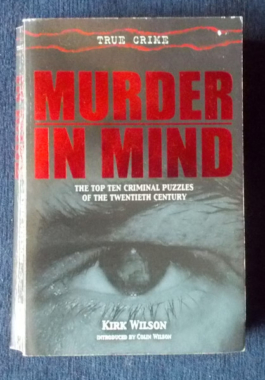 Investigative journalist Kirk Wilison tackles some of the most high-profile and confusing crimes to go unpunished. The investigations of top-ranking police officers, detectives and lawyers all failed to crack the riddles these cases created: who was responsible? And why were they never brought to justice? These are the crimes that we can never stop wondering about. Cases examined in this volume: John F. Kennedy's assassination; Jimmy Hoffa, union leader and mob associate, whose body was never found; Marilyn Monroe, screen goddess, whose 'suicide' raised more questions than it answered; Lord Lucan, peer and gambling addict, who vanished ito thin air amid accusations of murder; T. Cullen Davis, born-again Christian and the richest man ever to be tried for murder; Serge Rubenstein, the virtuoso swindler whose case was clouded by the fact that thousands of people had reason to wish him dead. Claus Von Bulow, lawyer, consultant and socialite, who made two attempts on the life of his American wife; Joan Robinson Hill may have been murdered by her husband John Hill - then it seemed that John Hill himself was murdered on his own front doorstep - but was he? Helen Vorhees Brach, who disappeared at age 65 - the victim of a slick pure-bred horse salesman?
Investigative journalist Kirk Wilison tackles some of the most high-profile and confusing crimes to go unpunished. The investigations of top-ranking police officers, detectives and lawyers all failed to crack the riddles these cases created: who was responsible? And why were they never brought to justice? These are the crimes that we can never stop wondering about. Cases examined in this volume: John F. Kennedy's assassination; Jimmy Hoffa, union leader and mob associate, whose body was never found; Marilyn Monroe, screen goddess, whose 'suicide' raised more questions than it answered; Lord Lucan, peer and gambling addict, who vanished ito thin air amid accusations of murder; T. Cullen Davis, born-again Christian and the richest man ever to be tried for murder; Serge Rubenstein, the virtuoso swindler whose case was clouded by the fact that thousands of people had reason to wish him dead. Claus Von Bulow, lawyer, consultant and socialite, who made two attempts on the life of his American wife; Joan Robinson Hill may have been murdered by her husband John Hill - then it seemed that John Hill himself was murdered on his own front doorstep - but was he? Helen Vorhees Brach, who disappeared at age 65 - the victim of a slick pure-bred horse salesman? -
 The Goatfell Murder: Near the summit of Goatfell, the body of Edwin Robert Rose was found stuffed under a granite boulder on 28 July 1889. He was a 32-year-old builder's clerk from London who had last been seen alive on the mountain a fortnight before. His head and face had been brutally smashed, probably by rocks. The last person seen in his company, a 26-year-old engineering worker known as John Annandale, was nowhere to be found. Annandale's real name was John Watson Laurie, a pattern maker for a Glasgow locomotive firm. He was caught by police two months later and at the end of a two-day trial under an impatient judge he was found guilty of murder, despite the lack of forensic evidence or any witnesses to the deed. But was there a miscarriage of justice? The Ardlamont Mystery: Alfred John Monson began working as a gentleman's tutor for the Hambrough family in 1891. In 1893 he took the lease on the Ardlamont estate in Argyll for the shooting season. On 10 August he took Windsor Dudley Cecil Hambrough, his 20-year-old pupil, for a day's hunting in an area of woodland. A third man joined them, Edward Scott, a friend of Monson. Estate workers heard a shot, then saw Monson and Scott running to Ardlamont House carrying the guns. Monson alleged that Hambrough had shot himself in the head by accident while climbing a fence. But with very large insurance policies having been taken out less than a week before... John Donald Merrett: He was tried for the murder of his mother, Bertha Merrett. It was at first believed that she had committed suicide - but it was discovered that Merrett had been defrauding her. His defence was skilful and the Jury returned a verdict of "Not Proven". Not proven - but was he innocent? The Portencross Murder: Mary Gunn, her sister Jessie McLaren and her sister's husband Alex McLaren were enjoying a quiet evening at an isolated cottage when six shoots were fired. Jessie and Alex were wounded - but Mary was dead. The family lived quietly; and were considered to be 'well-off' in the locality. The only clues were six footprints, a few spent bullets and evidence that a stranger had been asking the way to Portencross...
The Goatfell Murder: Near the summit of Goatfell, the body of Edwin Robert Rose was found stuffed under a granite boulder on 28 July 1889. He was a 32-year-old builder's clerk from London who had last been seen alive on the mountain a fortnight before. His head and face had been brutally smashed, probably by rocks. The last person seen in his company, a 26-year-old engineering worker known as John Annandale, was nowhere to be found. Annandale's real name was John Watson Laurie, a pattern maker for a Glasgow locomotive firm. He was caught by police two months later and at the end of a two-day trial under an impatient judge he was found guilty of murder, despite the lack of forensic evidence or any witnesses to the deed. But was there a miscarriage of justice? The Ardlamont Mystery: Alfred John Monson began working as a gentleman's tutor for the Hambrough family in 1891. In 1893 he took the lease on the Ardlamont estate in Argyll for the shooting season. On 10 August he took Windsor Dudley Cecil Hambrough, his 20-year-old pupil, for a day's hunting in an area of woodland. A third man joined them, Edward Scott, a friend of Monson. Estate workers heard a shot, then saw Monson and Scott running to Ardlamont House carrying the guns. Monson alleged that Hambrough had shot himself in the head by accident while climbing a fence. But with very large insurance policies having been taken out less than a week before... John Donald Merrett: He was tried for the murder of his mother, Bertha Merrett. It was at first believed that she had committed suicide - but it was discovered that Merrett had been defrauding her. His defence was skilful and the Jury returned a verdict of "Not Proven". Not proven - but was he innocent? The Portencross Murder: Mary Gunn, her sister Jessie McLaren and her sister's husband Alex McLaren were enjoying a quiet evening at an isolated cottage when six shoots were fired. Jessie and Alex were wounded - but Mary was dead. The family lived quietly; and were considered to be 'well-off' in the locality. The only clues were six footprints, a few spent bullets and evidence that a stranger had been asking the way to Portencross...




